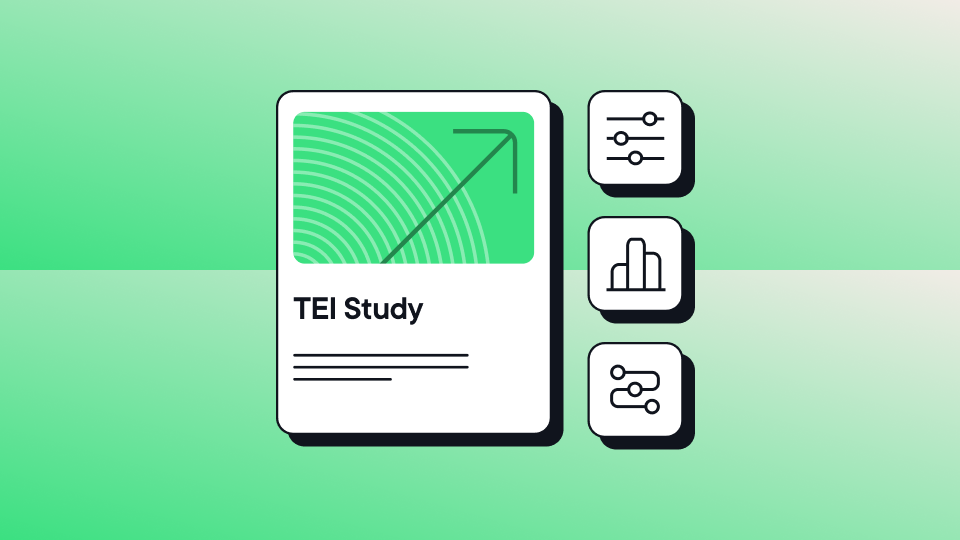Stellen Sie sich Folgendes vor: Sie sind ein vielbeschäftigter Marketingfachmann, der mit einer Million Aufgaben jongliert, und plötzlich werden Sie gebeten, sich für ein CMS für die Website Ihres Unternehmens zu entscheiden. Es ist, als stünden Sie im Cornflakes-Gang und wären überwältigt von den vielen Möglichkeiten. Entscheiden Sie sich für die bewährte Schachtel, zu der Sie schon hundertmal gegriffen haben (hallo, Cornflakes traditionelles CMS)? Oder entscheiden Sie sich für die glänzende neue Marke, von der alle schwärmen (Hallo, Eggo Blueberry Waffle Müsli Headless CMS)?
Die Wahl eines Content Management Systems kann sich genauso verwirrend anfühlen. Ein traditionelles CMS ist das vertrauenswürdige All-in-One-Tool, an das Sie sich über die Jahre gewöhnt haben - es ist zuverlässig, einfach zu bedienen und erledigt seine Aufgabe.
Aber Headless CMS? Das ist der neue Trend. Es bietet Flexibilität und die Möglichkeit, bei der Bereitstellung von Inhalten kreativer zu sein. Der Schlüssel liegt darin, zu verstehen, welches CMS am besten für Ihre Unternehmensziele und die Plattformen geeignet ist, auf denen Sie Ihre Zielgruppe erreichen wollen. Also, lassen Sie uns das mal aufschlüsseln. Sind Sie auf der Suche nach Einfachheit und Schnelligkeit oder brauchen Sie mehr Kontrolle und Skalierbarkeit? Lassen Sie uns beide Optionen untersuchen und herausfinden, welches CMS am besten für Ihre geschäftlichen Anforderungen geeignet ist.
Was ist ein traditionelles CMS?
Ein traditionelles CMS (auch bekannt als monolithisches CMS) ist wie das bewährte All-in-One-Tool, das Sie auf Ihrem Schreibtisch haben - das wahre Schweizer Taschenmesser der Content Management Systeme. Alles, was Sie brauchen - Erstellung, Verwaltung, Speicherung und Bereitstellung von Inhalten - geschieht auf einer einzigen Plattform. Denken Sie an Plattformen wie WordPress: Sie schreiben den Inhalt, drücken auf "Veröffentlichen" und schon steht er im Internet, bereit, um mit dem von Ihnen gewählten Thema oder Layout angezeigt zu werden.
Für die meisten Vermarkter ist WordPress traditionell die erste Wahl, weil es einfach ist. Sie müssen kein Entwickler sein, um Inhalte zu veröffentlichen, und Sie müssen sich keine Gedanken darüber machen, wie sie auf dem Frontend aussehen werden - das ist bereits im System integriert. Es ist ein einfaches, unkompliziertes CMS, auf das sich Vermarkter verlassen können, um Inhalte schnell zu erstellen und zu veröffentlichen.
Was ist ein Headless CMS?
TL;DR: Technisch gesehen speichert ein Headless CMS die Inhalte getrennt von der Darstellung der Inhalte. Sie verwalten Ihre Inhalte im Backend (nicht anders als bei einem herkömmlichen CMS), aber es gibt kein vordefiniertes Frontend.
Stattdessen verwenden Sie APIs, um die Inhalte auf jede beliebige Plattform zu bringen - Websites, Mobile Apps, Smartwatches, Sprachassistenten, was immer Sie wollen. Das bedeutet, dass Sie das digitale Erlebnis für jede Plattform individuell gestalten können.
Die lange Version: In den Anfängen des Internets waren Websites das wichtigste Mittel, um Kunden zu erreichen. Herkömmliche CMS wurden entwickelt, um alles - die Erstellung von Inhalten, die Speicherung und die Darstellung dieser Inhalte - an einem Ort zu verwalten. Das machte Sinn, als Sie nur Inhalte für Websites bereitstellten.
Aber dann explodierte die digitale Welt. Kunden begannen, über Mobile Apps, Smartwatches, Sprachassistenten wie Alexa und sogar über intelligente Kühlschränke mit Inhalten zu arbeiten. Herkömmliche CMS waren nicht flexibel genug, um dies zu bewältigen. Sie waren zu stark an das Erlebnis im Internet gebunden, was die Möglichkeiten der Unternehmen einschränkte, Inhalte über all diese neuen Kanäle bereitzustellen.
An dieser Stelle kamen Headless CMS ins Spiel.
Ein Headless CMS trennt das Backend (wo Sie Inhalte erstellen und verwalten) vom Frontend (wie diese Inhalte angezeigt werden). Es wurde entwickelt, um Vermarktern und Entwicklern mehr Flexibilität zu bieten.
Statt an eine Plattform (wie eine Website) gebunden zu sein, können Sie mit einem Headless CMS Inhalte einmal erstellen und auf jedem Gerät oder jeder Plattform bereitstellen - egal ob es sich um eine Mobile App, eine Smartwatch oder sogar ein VR-Headset handelt. Dieser Wandel fand statt, weil Unternehmen mit den Erwartungen ihrer Kunden Schritt halten mussten, und ein Headless CMS machte dies einfacher.
Kurz gesagt: Headless CMS wurden entwickelt, um das Problem zu lösen, Kunden auf verschiedenen Plattformen und Geräten zu erreichen. Für Vermarkter ist das ein entscheidender Vorteil. Es wurde entwickelt, um Inhalte überall dorthin zu bringen, wo sich Ihre Kunden aufhalten, sogar auf Plattformen, die noch gar nicht erfunden wurden. Ganz gleich, ob Ihr Publikum auf seinem Handy surft oder mit seinem virtuellen Assistenten chattet, Headless liefert die digitalen Erlebnisse, die es erwartet.
Vor- und Nachteile von Headless CMS
Sie haben wahrscheinlich schon von Headless CMS gehört, aber ist es wirklich so gut, wie es klingt? Lassen Sie uns die Vor- und Nachteile durchgehen, damit Sie herausfinden können, ob sich der Umstieg lohnt.
Vorteile von Headless
- Völlige Flexibilität: Sie haben die Kontrolle darüber, wie Ihre Inhalte auf den verschiedenen Geräten dargestellt werden. Sie möchten, dass Ihr Blog auf dem Desktop so und auf dem Handy anders aussieht? Kein Problem. Ein Headless CMS verwendet flexiblen Front-End-Code und gibt Ihnen die Möglichkeit, in Echtzeit auf veränderte Kundenerwartungen zu reagieren. Außerdem sorgt es dafür, dass Ihr Erlebnis über alle Kanäle hinweg konsistent bleibt.
- Zukunftssicher: Wenn neue Geräte auf den Markt kommen (wir sprechen von Ihnen, intelligente Kühlschränke), können Ihre Inhalte überall angezeigt werden.
- Schnellere Website: Ein Headless CMS kann die Ladezeiten verkürzen, da die Inhalte nur bei Bedarf abgerufen und angezeigt werden.
- Funktionen zur Personalisierung: Die Bereitstellung von Targeting-Inhalten auf verschiedenen Plattformen ist ein Kinderspiel.
Die Nachteile eines Headless CMS
- Erfordert Entwicklungsressourcen: Wenn Sie mit Ihrem Entwicklungsteam nicht gerade befreundet sind, ist es an der Zeit, es einzuweihen. Ein Headless CMS wird oft als einfachere Lösung vermarktet, weil es sich ausschließlich auf die Content-Bereitstellung konzentriert. Aber Sie werden wahrscheinlich feststellen, dass Sie das System anpassen und mehr Funktionen einbauen müssen, was mehr Arbeit im Backend bedeutet. Und ein Headless CMS benötigt den Input von Entwicklern, um Inhalte abzurufen und zu präsentieren, insbesondere über mehrere Plattformen hinweg.
- Nicht unbedingt zukunftssicher: Wir wissen, dass wir dies bereits als Vorteil angeführt haben, aber das trifft nicht auf alle Headless CMS zu. Headless-Systeme können zwar sehr flexibel sein, aber sie werden nicht immer mit den wichtigsten Tools für zukunftssichere Erlebnisse geliefert - wie Personalisierung, Experimentieren oder A/B-Testing. Diese Funktionen tragen zur Differenzierung Ihrer Marke bei, und ohne sie müssen Sie andere Lösungen integrieren, was ein wenig Kopfzerbrechen bereiten kann. Außerdem muss Ihr Marketingteam genau wissen, wie all diese Teile zusammenpassen, um Verwirrung zu vermeiden.
- Höhere Kosten: All diese Flexibilität bringt zusätzliche Kosten mit sich - wir sprechen hier von mehr Entwicklungszeit, spezielleren Tools und wahrscheinlich einem höheren Preis für Ihre CMS-Plattform. Wenn Sie eine reine Headless-Lösung ins Auge fassen, sollten Sie unbedingt die technischen Ressourcen einplanen, die Sie benötigen, um einen reibungslosen Betrieb zu gewährleisten.
- Headless kann ein Hindernis für Vermarkter sein: Headless CMS sind oft technikzentriert, was dazu führen kann, dass sich Marketingexperten etwas ausgeschlossen fühlen. Bestimmte CMS, die sich selbst als Headless CMS bezeichnen, haben kein integriertes Frontend, so dass Sie auf praktische Tools wie WYSIWYG-Editoren, Inhaltsvorschauen und In-Context-Bearbeitung verzichten müssen. Stellen Sie sich vor, Sie versuchen, Ihre Website zu bearbeiten, ohne zu sehen, wie sie aussehen wird - ein bisschen so, als würden Sie versuchen, mit verbundenen Augen ein Ziel zu treffen. Das bedeutet, dass Marketingexperten sich bei Änderungen stärker auf die Entwickler verlassen müssen, was die Veröffentlichung von Inhalten verlangsamen kann.
Wenn Ihr Unternehmen jedoch mit einer Vielzahl von Altsystemen jongliert - Web Apps, Mobile Apps, was auch immer - könnte ein Headless CMS Ihre Eintrittskarte zu einem reibungsloseren Website-Betrieb sein.
Anstatt ein Vermögen auszugeben, um Ihre alten Systeme durch ein herkömmliches CMS zu ersetzen, können Sie mit Headless CMS Ihre aktuellen Tools miteinander verbinden und Ihre Technologie zukunftssicher machen. Es bricht diese Inhaltssilos auf und hilft Ihnen, Inhalte über alle Kundenkontaktpunkte hinweg zu verwalten, ohne an sperrige, monolithische Apps gebunden zu sein.
Vor- und Nachteile traditioneller CMS
Hey, nur weil Headless CMS im Trend liegen, heißt das nicht, dass herkömmliche CMS aussterben werden - sie sind zuverlässig und schnell. Aber wie alles haben auch sie ihre Stärken und Schwächen.
Vorteile von traditionellen CMS
- Einfach zu bedienen: Sie müssen sich keine Gedanken über Kodierung oder Entwicklung machen. Geben Sie einfach Ihre Inhalte ein, formatieren Sie sie und veröffentlichen Sie sie.
- All-in-One-Lösung: Alles, was Sie brauchen - von der Inhaltserstellung bis zur Veröffentlichung - geschieht an einem Ort.
- Geringere Ausgaben: Sie müssen keine zusätzlichen Entwickler einstellen oder Tools von Drittanbietern kaufen, damit alles funktioniert.
- Schnelles Einrichten: Ihre Website ist schnell einsatzbereit, ohne dass Sie ein eigenes Frontend erstellen müssen.
Nachteile eines traditionellen CMS
- Eingeschränkte Flexibilität: Sie sind an die verfügbaren Vorlagen und Layouts gebunden. Und wenn Sie etwas über mehrere Plattformen hinweg ändern möchten? Viel Glück an dieser Front. 😬
- Langsamer auf Nicht-Desktops: Traditionelle CMS sind nicht für die moderne Content-Bereitstellung auf Mobile Apps oder Smart Devices ausgelegt.
- Skalierbarkeit ist ein Problem: Wenn Sie Ihre Inhalte über mehrere Plattformen hinweg skalieren müssen, kann ein herkömmliches CMS damit nur schwer Schritt halten.
Traditionelle vs. Headless CMS auf einen Blick
| Funktion | Traditionelles CMS | Headless CMS |
| Einfaches Einrichten | All-in-One-Lösung | Erfordert Frontend-Entwicklung |
| Anpassungen | Beschränkt auf integrierte Themen und Layouts | Volle Kontrolle über die Anzeige der Inhalte |
| Multi-Channel | Schwierigere geräteübergreifende Bereitstellung | Entwickelt für Multi-Channel-Erlebnisse |
| Zeit bis zur Markteinführung | Schnell einzurichten | Erfordert Entwicklung |
| Kosten | Insgesamt niedriger | Höhere Entwicklungskosten |
| Skalierbarkeit | Begrenzt | Leicht skalierbar über neue Geräte |
Headless gehen oder bei der traditionellen Lösung bleiben?
Das ist die Frage, mein Freund.
Vielleicht haben Sie bereits erkannt, dass es an der Zeit ist, umzusteigen, aber im Kampf zwischen Headless CMS und traditionellem CMS gibt es keine pauschale Antwort. Wenn Sie Flexibilität, Personalisierung und Skalierbarkeit über mehrere Plattformen hinweg benötigen, ist ein Headless CMS die beste Lösung für Sie. Und wenn Sie eine einfache und kostengünstige Lösung für die Verwaltung Ihrer Website oder Ihres Blogs suchen, sind Sie mit einem traditionellen CMS gut bedient.
Wofür Sie sich auch entscheiden, stellen Sie sicher, dass es zu Ihrer Website-Strategie und Ihren langfristigen Zielen passt. Und denken Sie daran, dass die digitale Landschaft sich ständig verändert. Das richtige CMS kann der Schlüssel sein, um mitzuhalten - oder zurückzufallen.
- Zuletzt geändert: 06.02.2025 17:44:21


